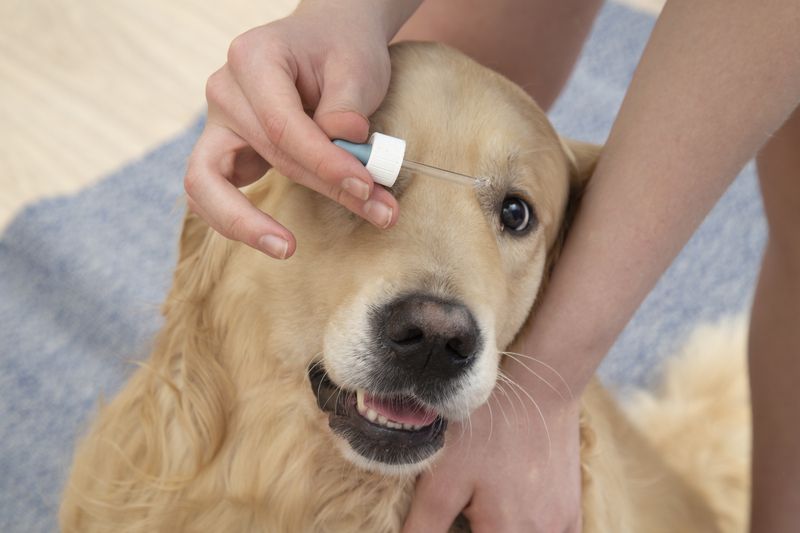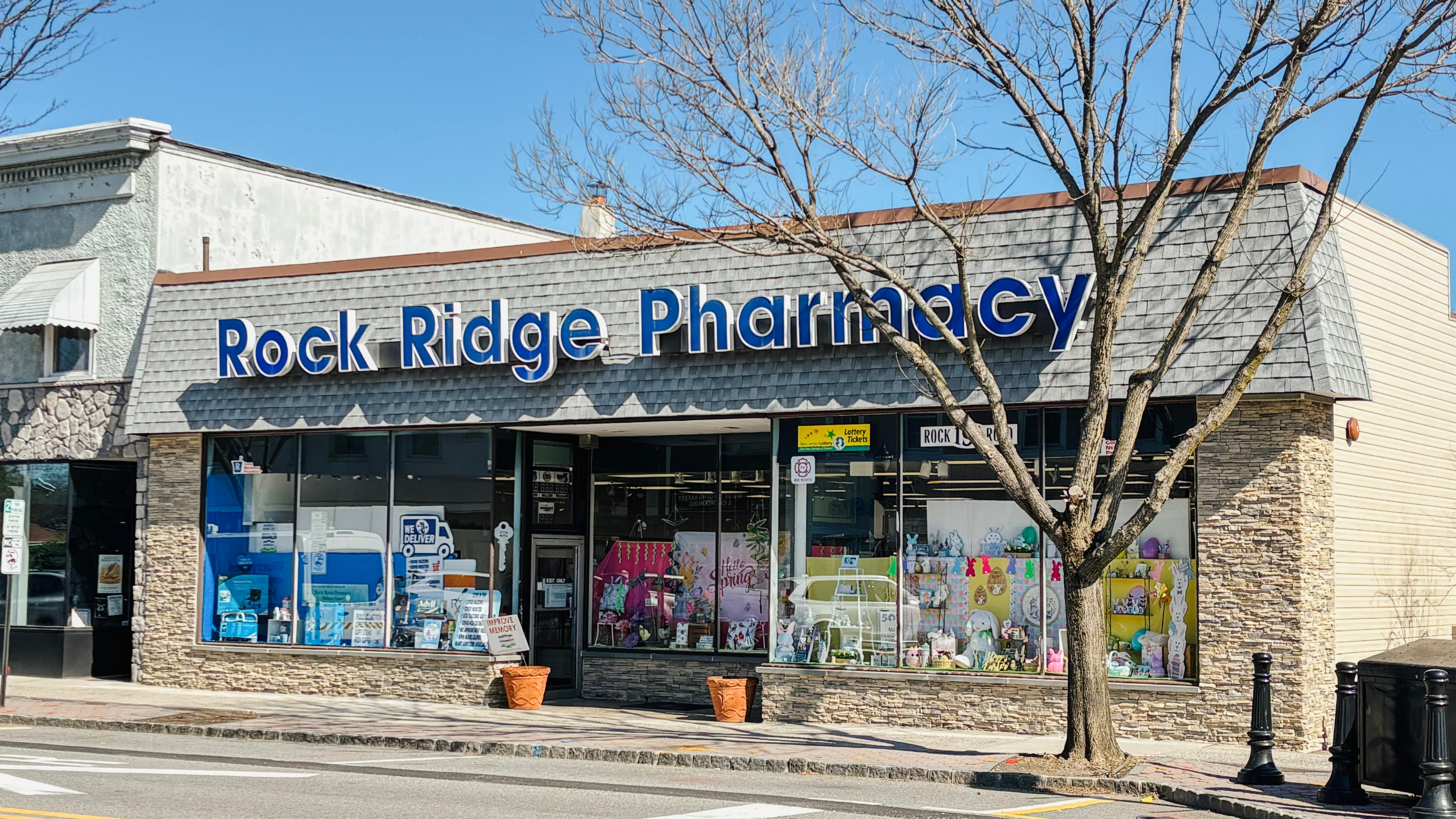Veterinary Ophthalmic Care • Prescription Required
Idoxuridine Eye Drops for Pets
Custom-compounded antiviral ophthalmic drops for pets with feline or canine herpesvirus and related viral eye infections.
Veterinarian-prescribed • Pharmacist-guided • Pet-approved
What Is Idoxuridine?
Idoxuridine is an antiviral eye medication that blocks viral DNA synthesis, stopping replication of herpes viruses in the eye.
It is most often used for feline herpesvirus (FHV-1) and related conditions such as viral keratitis and conjunctivitis in both cats and dogs.
Compounded in a USP <797>-compliant sterile facility, our Idoxuridine drops are prepared to ensure purity, safety, and consistency for veterinary use.

Why Use Compounded Idoxuridine?
Idoxuridine is rarely available as a commercial veterinary product. Compounding ensures safe, effective, and tailored antiviral eye treatments.
Custom Concentrations
Dosed according to infection severity and your veterinarian’s treatment plan.
Preservative-Free
Formulated without preservatives to reduce irritation during healing.
Comfortable Bases
Available in multiple ophthalmic bases for comfort and better penetration.
Sterile Preparation
Compounded in a USP <797>-compliant sterile facility for safety.
Pharmacist Expertise
Ensures potency, stability, and safe use under veterinary guidance.
How Idoxuridine Works
Idoxuridine disrupts viral DNA synthesis, stopping replication of herpes viruses and helping restore eye health in pets.
Blocks DNA Synthesis
Acts as a nucleoside analog, inserting into viral DNA and halting replication.
Prevents Spread
Stops the virus from infecting healthy eye cells and worsening the condition.
Reduces Shedding
Lowers viral shedding, decreasing reinfection and transmission risk.
Supports Healing
Allows natural recovery of corneal and conjunctival tissues as viral load decreases.
| Medication | Strength | Form | Base | Primary Use |
|---|---|---|---|---|
| Idoxuridine | 0.1% | Eye Drops (5–15ml) | Aqueous | Viral eye infections |
Understanding Base Options & Costs
Different formulation bases designed for comfort, absorption, and cost balance
Aqueous (Water-Based)
Fast absorption with immediate effect.
Comfortable for most pets.
Most economical base option.
Artificial Tears Base
Provides soothing lubrication for irritated eyes.
Helps wash away viral particles.
Mid-range cost.
Buffered Saline
pH-optimized for better tolerance.
Reduced stinging on application.
Moderate pricing.
Premium Buffered Solutions
Enhanced stability and shelf-life.
Comfort agents for sensitive eyes.
Highest cost option.
How to Give the Drops
Step-by-step guide for safe application
Dosage Guidelines & Cost Considerations
Typical Dose
1 drop in affected eye(s) twice daily (every 12 hours).
Treatment Duration
Usually 2–4 weeks for acute infections.
Maintenance Therapy
May require ongoing treatment for chronic cases.
Monthly Cost
Depends on strength & duration — call Rock Ridge Pharmacy for details.
If You Miss a Dose
Give when remembered, but keep 12-hour intervals.
Complete the Course
Finishing the course is essential to prevent resistance and recurrence.
Storage & Safety Information
Proper handling of Idoxuridine eye drops helps ensure safety and effectiveness during treatment.
Storage & Handling
- Keep refrigerated: 36–46°F (2–8°C).
- Store in original amber container, away from light.
- Do not freeze or expose to heat.
- Replace cap tightly after each use.
- Avoid contaminating the dropper tip.
- Discard after treatment course or if solution changes color.
Safety & Side Effects
Common mild effects: brief stinging, increased tearing, or mild redness in the first few days.
Contact your vet if: redness worsens, cloudy discharge develops, or your pet shows signs of pain or vision changes.
Treatment Timeline & Cost Planning
Days 1–3
Frequent dosing to build antiviral levels.
Cost: Highest use, may need refill sooner.
Days 4–7
Noticeable reduction in redness and discharge.
Cost: Continued frequent dosing.
Days 8–14
Marked improvement; dosing may taper with vet guidance.
Cost: Lower daily usage.
Long-term
Some pets require ongoing suppressive therapy.
Cost: 40–60% less than acute treatment.
Monitoring
Follow-up exams at 7–14 days ensure safety and response.
Extra cost: Veterinary visits.

Why Choose Rock Ridge Pharmacy for Veterinary Eye Drops?
- PCAB-accredited & USP <797> sterile lab ensuring safety and quality.
- Veterinary compounding expertise trusted since 1950.
- Custom dosing & formulations for different species and conditions.
- Fast turnaround — most prescriptions ready in 1–2 business days.
- Pharmacist support for storage, use, and follow-up care.
Rock Ridge Pharmacy works with veterinarians and pet owners to provide safe, sterile, and personalized ophthalmic solutions backed by decades of trusted care.
FAQs about Idoxuridine Eye Drops at Rock Ridge Pharmacy
Do I need a prescription?
Yes. Idoxuridine is only available with a veterinarian's prescription after proper diagnosis of viral eye infection.
How much will this cost per treatment course?
A typical 7–14 day treatment course costs $55–95, depending on strength and frequency. Chronic cases requiring maintenance may cost $35–60 monthly.
Does pet insurance cover antiviral eye medications?
Many pet insurance plans cover prescription medications for diagnosed conditions. Keep receipts for potential reimbursement.
How quickly does it work against viral infections?
Most pets show initial improvement within 3–5 days, with significant improvement by 7–10 days. Complete resolution may take 2–3 weeks.
Is this safe for long-term use?
Idoxuridine can be used long-term for chronic viral conditions when monitored by a veterinarian. Some cats with recurrent herpesvirus require ongoing suppressive therapy.
Can this be used with other eye medications?
Yes, but timing is important. Wait 5–10 minutes between different eye drops. Our pharmacist will provide specific sequencing instructions.
What if my pet doesn't improve after a week?
Our pharmacist will work with your veterinarian to potentially increase concentration, adjust frequency, or consider combination antiviral therapy.
Is it effective against all types of eye infections?
Idoxuridine specifically targets viral infections, particularly herpes viruses. It's not effective against bacterial or fungal infections.
Can I use this preventively during stress?
Some veterinarians prescribe idoxuridine preventively for cats prone to herpes flare-ups during stressful events. Discuss with your vet.
What's the difference between strengths?
Higher concentrations (0.5–1%) are used for severe acute infections, while lower concentrations (0.1%) may be sufficient for maintenance or mild cases.
Can this be used in both cats and dogs?
Yes, though it's most commonly prescribed for cats with feline herpesvirus. Dogs with canine herpesvirus eye infections may also benefit.
How should I handle multiple pets if one has a viral infection?
Keep infected pets separated, wash hands between handling, and use separate feeding bowls. Viral eye infections can be contagious.
What if I accidentally contaminate the dropper?
Contact us immediately for a replacement. Contaminated antiviral drops can worsen infections or lose effectiveness.
Are there any drug interactions?
Inform your veterinarian about all medications, including topical treatments. Some combinations may affect antiviral effectiveness.
Can I stop early if my pet looks better?
No. Complete the full course as prescribed to prevent viral resistance and recurrence. Stopping early often leads to rebound infections.
What payment options are available for treatment courses?
We accept cash, credit cards, CareCredit, and can work with pet insurance. Payment plans available for extended treatments.
How do I prevent reinfection?
Keep your pet's stress levels low, maintain good hygiene, and follow your veterinarian's recommendations for immune support and environmental management.
